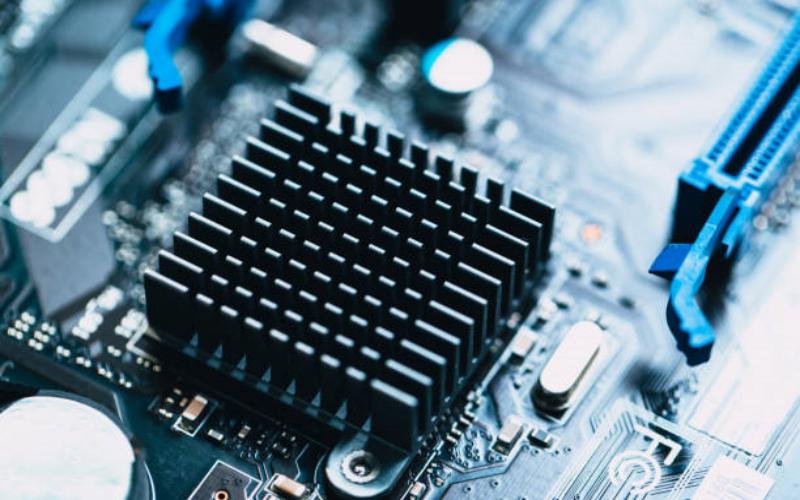Introduction: Understanding the Importance of Heat Sink Design
Heat sink design plays a crucial role in ensuring the efficient cooling of electronic devices. Whether it's a computer processor, power amplifier, or LED light, heat sinks are essential components that help dissipate heat and prevent overheating. In this comprehensive Heat Sink Design Guide, we will explore the various aspects of heat sink design and provide you with valuable insights to help you make informed decisions.
1. What is a Heat Sink and How Does It Work?
A heat sink is a passive cooling device that transfers heat generated by electronic components to the surrounding environment. It typically consists of a metal base and fins, which increase the surface area for better heat dissipation. When an electronic component heats up, the heat is conducted through the base and then radiated away by the fins, allowing the device to maintain optimal operating temperatures.
2. Factors to Consider in Heat Sink Design
When designing a heat sink, several factors need to be taken into account to ensure its effectiveness. These factors include the thermal resistance of the materials used, the size and shape of the heat sink, the airflow around the heat sink, and the thermal interface material between the heat sink and the component. Each of these aspects plays a critical role in determining the overall thermal performance of the heat sink.
3. Selecting the Right Material for Your Heat Sink
The choice of material for a heat sink is crucial as it affects both the thermal conductivity and the weight of the heat sink. Commonly used materials include aluminum, copper, and their alloys. Aluminum is lightweight and cost-effective, while copper offers superior thermal conductivity. The selection of the material depends on the specific requirements of the application, such as the power dissipation of the component and the available space for the heat sink.
4. Understanding Thermal Resistance and Its Impact
Thermal resistance is a critical parameter that determines how effectively a heat sink can dissipate heat. It is important to minimize the thermal resistance between the component and the ambient environment. Factors such as the thermal conductivity of the heat sink material, the thermal interface material, and the contact area between the heat sink and the component all contribute to the overall thermal resistance. Lower thermal resistance leads to better heat dissipation and lower operating temperatures.
5. Optimizing Heat Sink Size and Shape
The size and shape of a heat sink directly impact its cooling performance. Larger surface areas and longer fins generally result in better heat dissipation. However, it's essential to strike a balance between size, weight, and available space. Computational fluid dynamics (CFD) simulations can help optimize the shape and dimensions of a heat sink to achieve maximum cooling efficiency.
6. Enhancing Heat Sink Performance with Airflow
Airflow plays a crucial role in the cooling process of a heat sink. Adequate airflow helps remove the heat absorbed by the heat sink more efficiently. Design considerations such as the positioning of fans, vents, and ducts can significantly improve the overall cooling performance. It's important to ensure a proper balance between the heat sink's design and the airflow within the electronic device.
7. Importance of Thermal Interface Materials
The thermal interface material (TIM) is the layer between the heat-generating component and the heat sink. It fills in the microscopic gaps and air pockets, ensuring better thermal conductivity. Commonly used TIMs include thermal grease, thermal pads, and phase change materials. The selection of the right TIM is crucial to minimize thermal resistance and improve the overall thermal performance of the heat sink.
8. Advanced Techniques for Heat Sink Design
As technology advances, innovative techniques are emerging to further enhance heat sink design. Some of these techniques include heat pipes, vapor chambers, and thermoelectric coolers. Heat pipes effectively transport heat from the source to the heat sink using a sealed pipe filled with a working fluid. Vapor chambers offer larger surface areas for heat dissipation, while thermoelectric coolers use the Peltier effect to actively cool electronic components.
9. Testing and Validation of Heat Sink Designs
Once a heat sink design is finalized, it's crucial to test and validate its performance. Various testing methods, such as thermal imaging, thermocouple measurements, and CFD simulations, can help assess the heat sink's effectiveness. The thermal resistance, temperature distribution, and overall thermal performance should be evaluated to ensure the heat sink meets the desired specifications.
10. Conclusion: Designing Efficient Heat Sinks for Optimal Cooling
Designing an efficient heat sink is essential for preventing overheating and ensuring the reliable operation of electronic devices. By considering factors such as material selection, thermal resistance, size and shape optimization, airflow management, and thermal interface materials, you can create heat sink designs that effectively dissipate heat. Remember to test and validate your designs to ensure optimal cooling performance. With this comprehensive heat sink design guide, you are now equipped with the knowledge to make informed decisions and create effective cooling solutions for your electronic devices.

